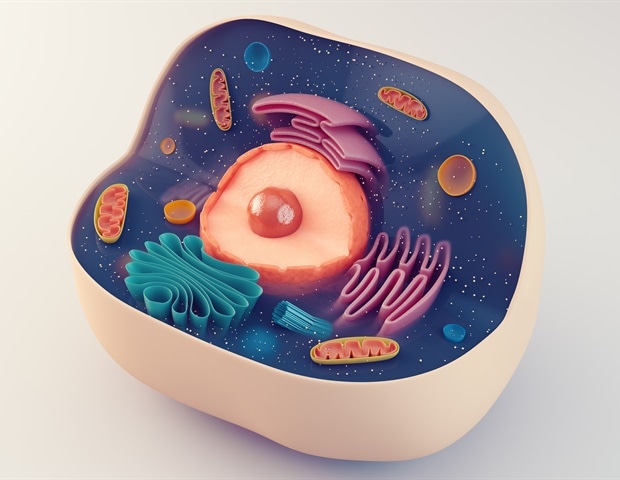A recent study from Tata Institute of Fundamental Research, Mumbai, India has revealed new details about how our cells clean up and recycle waste. This process, known as autophagy, is like a self-cleaning mechanism for cells, helping the cells stay healthy by getting rid of damaged parts and recycling useful components. The process involves formation of a vesicle called autophagosome, which encapsulates the cellular waste. The autophagosome then fuses with another type of vesicle called lysosome. The fused stage is called autolysosome. The autolysosome ultimately matures into lysosome, where the waste is degraded by different enzymes and important starting materials are released back into the cytoplasm. The autophagosomes, autolysosomes and lysosomes can be considered as different stages of the cellular recycling process. Therefore, when cells notice they have too much “junk” inside, autophagy kicks into action.
It is like a little clean-up crew inside the cell that sorts out the waste, recycles useful parts, and disposes off the rest. However, autophagy is not just about tidying up. The process is also extremely crucial for survival. When cells face tough times, like deprivation of nutrients or oxygen, autophagy can break down older, less useful components to provide essential material and aid in survival. Hence, this is one of the most important processes in our body. Impaired autophagy is linked to cardiovascular diseases, neurodegenerative diseases like Alzheimer’s disease and Parkinson’s disease, metabolic disorders like diabetes and cancer. Various proteins and small molecules work in tandem to regulate this vital process. Dysregulation of any of the regulators can lead to disruption in autophagy. Hence, for better understanding of how autophagy works, we need to know what is happening inside the autophagic vesicles at every stage of the process. This is where this recent finding made an exciting leap forward.
Researchers focused on simultaneous tracking of two important factors: pH and hydrogen peroxide (H2O2) levels inside autophagic vesicles. Now, the question is why these two factors were chosen. The proton levels or pH inside the autophagic vesicles changes from 6-6.5 to 4.5 as we go from autophagosomes to autolysosomes to lysosomes. Therefore, pH serves as an indicator for identifying the stage of autophagy. Tracking a second analyte with pH would help in getting an idea on how the levels of second analyte fluctuate as autophagy progresses. H2O2 is a key regulator of autophagy. In healthy cells, low levels of H2O2 help promote autophagy and allow cells to adapt to stress. However, when cells experience oxidative stress, H2O2 levels can lead to autophagic failure and eventually cell death. But how? To get an answer to that and understand how autophagy can go wrong in case of different diseases, it is important to know how H2O2 behaves in the vesicles during different stages of autophagy.
In this study, researchers used novel autophagic-vesicle-targeted fluorescent sensors to track both pH and H2O2 levels simultaneously inside the autophagic vesicles. The pH sensors allowed them to identify the different stages of autophagic vesicles. Then, they used the H2O2 sensor to track the hydrogen peroxide levels at each stage of the process. Here’s where the discovery gets exciting: The scientists found that the highest levels of H2O2 were in the autolysosomes, the middle stage of autophagy. This was a surprise, as no one had previously measured H2O2 levels in the vesicles at different stages of autophagy and it was expected that the levels at the end stage would be high. The results reveal that autolysosomes have a crucial role to play in the process, and their high H2O2 content could further provide important clues about how autophagy is regulated.
What does this mean for the future? This discovery opens up new avenues for understanding autophagy in health and disease. By knowing where and when H2O2 levels peak during autophagy in the disease conditions, researchers can further explore how oxidative stress might affect the process and lead to problems in the cell. The new information could lead to new ways of treating diseases associated with impaired autophagy. Moreover, understanding the role of H2O2 in the different stages of autophagy could eventually help develop drugs or therapies that fine-tune the process, restoring balance to cells and improving health. Further exploration of these findings will provide valuable insights into how our cells stay healthy and open up exciting possibilities toward improved health.
Source:
Journal reference:
Kahali, S., et al. (2025). Simultaneous Live Mapping of pH and Hydrogen Peroxide Fluctuations in Autophagic Vesicles. JACS Au. doi.org/10.1021/jacsau.4c01021.
Source link : News-Medica

